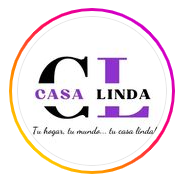When shopping for kitchen, bathroom, and organization accessories, you look online for kitchen, bathroom, and other products to organize your home and make it more organized and easier. You select some plastic containers for their size, color, and practicality; however, you notice that some of them are labeled with a seal that says “BPA Free.”
But what does BPA-free mean? When should I choose them? Why should I know what they mean?
Today in this Casalindaeasyhome article, we will tell you about it.
What does BPA-free plastic mean?
We often find items for sale such as: thermoses, kitchen utensils, bottles and products made with plastic materials that may come into contact with human consumption, marked with the slogan “BPA FREE”, “0% BPA” or “BPA Free”.
This label indicates the absence of Bisphenol A, a chemical component that was previously very common in the manufacture of plastics and which today allows us to have peace of mind when using them.
What does BPA stand for?
BPA is a chemical or compound called Bisphenol A (commonly abbreviated as BPA), used mainly in the industrial production of polycarbonate plastic containers, cans for preserving food and beverages, epoxy resins for coating products such as stainless steel thermoses, among others.
The origin of its use dates back to the 1960s, where it was widely used for the production of water bottles, plastic baby bottles, storage products, electronic devices, etc.
Why is BPA-free plastic important?
More than 20 years ago, studies were conducted on the effect that the use of BPA in plastic products could have.
The study focused on the high levels that could be found in products manufactured with this component and the high probability of experiencing health damage due to consuming food stored in bottles or packaging manufactured with Bisphenol A, when exposed to temperature changes and these released particles that contaminated the food.
These findings yielded alarming results.
Plastic products that are not BPA-free are associated with brain problems and diseases, hormonal changes, increased blood pressure, prostate damage, development of fetuses, babies, children, among other effects on people's health.
Knowing whether the product we are going to use in our pantry for food management is a BPA-free plastic allows us to provide high levels of safety when using it, while also taking care of our health and that of our family.
How to recognize a BPA-free plastic product?
Currently, plastic product manufacturers certify that many of their products are BPA-free, marking them with stickers, laser prints, seals or marked packaging that allow us to identify which items are free of this chemical.
Example of BPA-free plastic products:|
|
|
|
|
|
|
|
|
Which products should be BPA-free?
Nowadays we can find a great variety of products made of plastic for our daily use. Chairs, buckets, glasses, shelves, paints, PVC pipes and hundreds of other products are part of the wide portfolio of items that we can find.
It is worth highlighting The main route of exposure to BPA is through food, especially with products that come into direct contact with food, such as containers for storing food, plastic containers, bottles, baby bottles or reusable cups ; therefore, this is where we have to be most careful and make sure that they do not contain BPA.
Second-use or recycled materials
This special attention to the use of plastics for food storage also applies to those that are recycled, since their treatment can also alter the benefits of the plastic, causing damage to health . Just make sure that the brands you choose comply with Colombian regulations while also caring about the environment.







